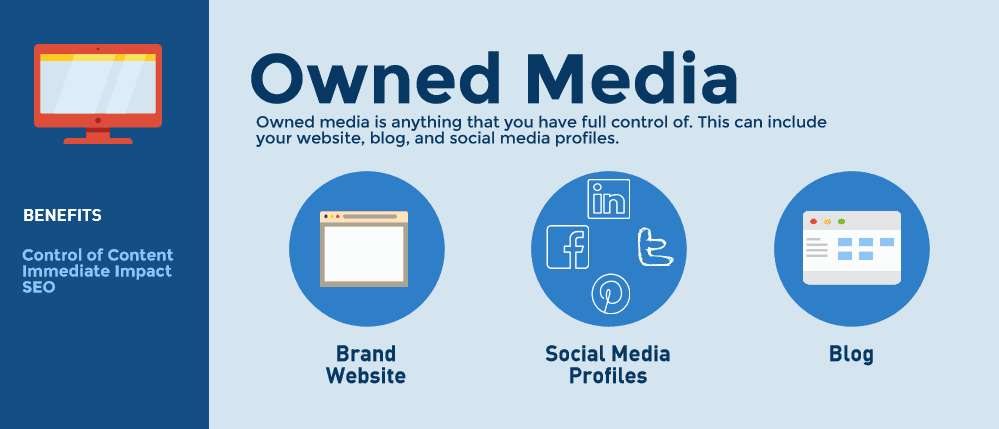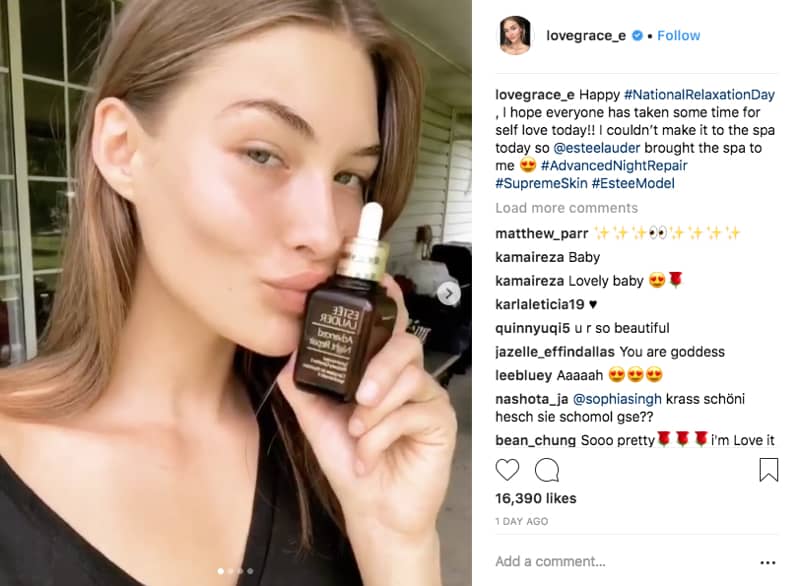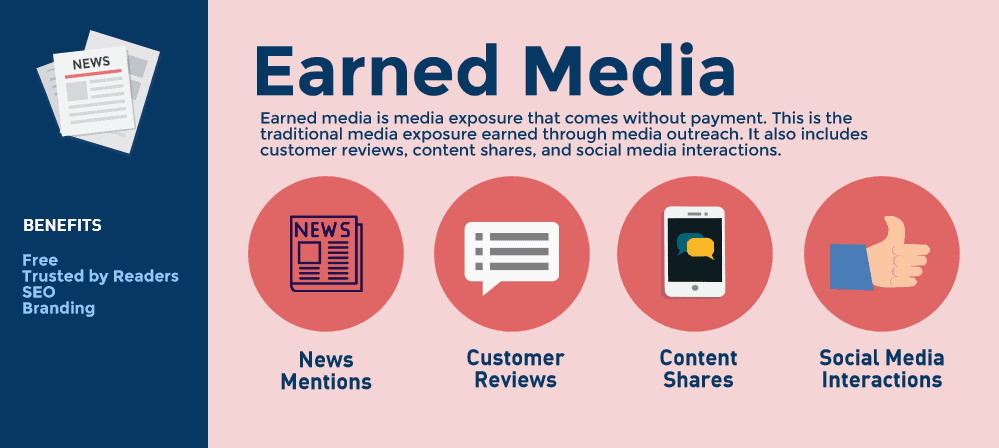Advertising is great, but you know what consumers really trust? Earned media. You know, earned media is that fancy term for a free press. It’s the stories publications write about a brand, the nods in listicles, inclusion in gift guides—any mention by a reputable publication.
And it has serious value.
In fact, according to Cision’s State of the Media Report, 92% of consumers trust earned media.
What can earned media do for your brand?
Basically earned media is public relations or PR. Good PR, i.e. positive mentions in a reputable publication, can increase organic traffic because when people see your brand mentioned in the press, they’re more likely to search for your brand directly. So naturally, working to get good PR and then optimizing it to reach even more potential customers is the goal.
This leads us to the question: Are you using your earned media to get more return on investment for your eCommerce brand? If not, it’s time to make a change and fast. In this guide, we’ll look at 10 ways to do just that.
What’s the difference between earned and paid media?
But before we dive into the list, let’s review the difference between earned and paid media. Earned media is, according to HubSpot’s definition, “any material written about you or your business that you haven’t paid for or created yourself.”
It’s evolved from the old-school B2B marketing concept of, say, a story about a brand on the nightly news, to encompass a much wider breadth of content including Twitter mentions, Instagram story highlights, and all manner of social media spotlights.
How can you tell if something is earned media or paid media?
Paid media would be an ad or an advertorial—copywritten to look like a magazine story, but that’s really a pay-to-play piece about a brand. Earned media would be included in a story by a news outlet, for instance, a mention in the New York Times Sunday Style Section.
What about owned media?
There’s also the concept of owned media. This type of media generally refers to online properties owned by a brand. For instance, a blog, website, brand Facebook page, etc.

How effective is earned media?
Earned media can be critically important to an eCommerce brand in many ways.
To begin, with earned media can influence a consumer’s buying behaviors.
Let’s say the local newspaper wrote a story about how an area eCommerce business was donating 400 turkeys for Thanksgiving dinner. That’s an emotional story. It might influence a shopper to spend money with that business because they’re doing good for the community. Earned media can be a powerful emotional tool.
It can also build credibility for a brand.
Consider holiday toy shopping. If parents are looking to buy their kids outdoor play structures as a big Christmas surprise, they want to find the safest jungle gyms possible. If an eCommerce brand gets included in an earned media story on the “Safest outdoor play structures to buy this season,” that can build consumer trust in a product and increase sales.
So how do you optimize your earned media to get more ROI? Here are 10 ways:
1. Put the Logos on Your Website
If an eCommerce brand has been lucky enough to be featured in some great publications, the first thing to do is let customers know that. By using the power of custom logos of newspapers, television programs, or even reputable blogs, marketers can immediately signal to shoppers earned media clout.
By including those publications’ websites on a blog, it will extend the lives of those stories and therefore increase ROI.
2. Share Influencer Endorsements
Did a big-name influencer just use your product in a post simply because they love it?
Tell your followers. That’s a perfect opportunity to take earned media and turn into an owned media piece of content by writing about it in a blog post, and then sharing it on the brand’s social media channels.

For instance, in 2017 Lin-Manuel Miranda, Tony Award winner and the creator of the musical Hamilton tweeted that he was obsessed with Food for the Southern Soul’s Peach Slow Burn Hot Sauce. The boutique eCommerce food producer and owner of the brand Jimmy Hagood, never saw the tweet coming. But he immediately capitalized on the gift of this megawatt earned media by retweeting local stories on the tweet and sharing them with his followers.
When a brand gets mentioned in a tweet or Instagram post by a big influencer, and the post gets many likes, that’s the ROI on that particular piece of earned media and, aside from the labor costs to repost the information or share it, it’s absolutely free.
Related post: Favorite Influencer Marketing Campaigns
3. Let Your Audience Create Earned Media
With the rise of social media, marketers have realized that brand audiences can be their best-earned media creators.
You can wait and watch for an audience to endorse a product. Or you can give them some help by encouraging the use of a hashtag, then curating all the earned media from followers using the hashtag in posts. By repurposing this content you’re increasing ROI and encouraging more audience members to chime in at the same time.
4. Use Earned Media in Paid Ads
Boost credibility by promoting the earned media received.
If a great story on your eCommerce brand comes out, take quotes from the piece and turn it into paid media.

Marketers do this all the time. Just look at any political ad for an example — “Mayor Billy Bob tells the Podunk Dispatch that ‘Johnny Chestnut would make a great city council member.’” Consumers listen to authority figures, so if someone has something good to say about your brand in print, take what they’ve said and use it in a paid advertising campaign to stretch the earned media even further. You’ll be getting more for your money by extending the use of the quote.
5. Reviews are Earned Media Too
Brand managers tend to get nervous when they hear the word review, but reviews of products are great earned media when they’re giving 4-star ratings.
Use those to your advantage by sharing reviews either on social media or on an eCommerce webpage so that customers can see what other shoppers think. Amplifying this content can help reach your target audience and actually can result in higher ROI because shoppers trust each other more than any other source.
6. Earned Media in SEO
Search engine optimization likes fresh content. So give it some.
Say you have a new product coming out. Write a press release or blog post on your site then share it on social media.
As fans repost it or retweet it with their own comments, that’s fresh earned media that Google can then use to update search engine results pages. And, if you’re lucky, all that reposting might just result in traditional media picking up the story, creating even more ROI.
Related post: How to Optimize Your Content Using Keywords
7. Put Earned Media Into Newsletters
Always remind your audience of your earned media by linking to it in newsletters. This can be done with a deliberate written-out mention or with a logo where they can click to read more. A logo maker will help you create a logo with friendly fonts that incite the click.
8. Don’t Discount Trade Publications
Everyone wants to get spotlighted on The Today Show, but smaller pubs and trade magazines have just as much value. Being featured in a trade pub is a huge endorsement and one that could result in greater ROI than a 10-second blip on cable news.
Consider Culture, a magazine all about cheese. Technically a trade publication, it’s read by many consumers. So when it ran a story about how local cheesemakers dealt with the West Coast wildfires this year, that not only put gave those vendors an emotional piece of earned media, it pulled at the heartstrings of cheese lovers who may have been more inclined to shop with those cheesemakers in light of their challenges.
9. Encourage Employees to Share
If your team doesn’t know about your earned media wins, then how on earth will consumers know? The post earned media stories to staff internal channels so they can share and spread the word.

Use staff hashtags to encourage teams to share exciting earned media stories with pride.
10. Give the Writer a Shoutout
Do you know what journalists rarely hear? “Thank you.” So give them a shoutout for a story written on your brand.
You might be surprised how far this will go. It doesn’t just add click intrigue—it also builds goodwill with someone interested in your brand. You never know—it could result in future stories.
For instance, Hrishikesh Hirway, the podcast host behind the popular show “Song Exploder,” which was just made into a Netflix series, was recently profiled in the New York Times. Rather than simply post that to his social media, Hirway thanked the author in an Instagram story and mentioned that some two decades prior she had actually reviewed one of his albums in another publication. That kind of personalized message can pay big dividends later on and remind a writer that not only was a brand grateful, but also interested in the writer’s career. That could result in future coverage and greater ROI.
Ultimately, it’s important to realize that paid and owned media aren’t the only resources at an eCommerce marketer’s disposal.
Earned media really is free publicity and it can do wonders for ROI.
Here’s proof: PRNewswire found that Millennial marketers see earned media as more effective than do Baby Boomer marketers. As younger generations take on the bulk of consumer spending, earned media will only grow more important. It’s how you use it to amplify a brand that matters.







